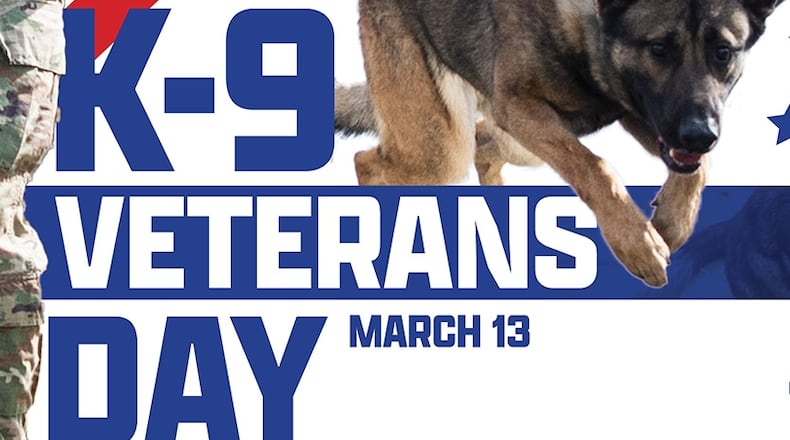“The dogs play a very important role to the unit by providing explosive and narcotics detection for all of Wright-Patterson,” said Staff Sgt. Lacey Bockman, an 88 SFS handler. “We also provide a psychological deterrent by doing walking patrols that help prevent crime from happening on base.”
At Wright-Patterson AFB, there are six military working dogs in the kennels run by Master Sgt. William Riney, kennel master at 88 SFS.
MWDs play a vital role regarding WPAFB security with their primary mission being detection.
“The biggest contribution to Wright-Patterson is their detection capability and prevention of threats of an (improvised explosive device) onto the base,” Riney said. “They also provide a psychological deterrent just by their presence. If someone attempts to bring something onto the installation, seeing the dog could be the factor that makes them turn their vehicle around.”
The kennels at WPAFB are Air Force Materiel Command’s No. 1 tasked unit when it comes to supporting the Secret Service for presidential and vice presidential visits to the Midwest, according to Riney.
Normal day-to-day work for the K9s would be to conduct duties with the handler, such as random antiterrorism measures, vehicle sweeps and walking patrols.
“The dog is required to do specific detection and patrol training to advance their skills on a daily basis,” Riney said. “The biggest joy for the MWD every day is just spending time with the handler and continuing to build that bond.”
It’s not all work and no play for MWDs, though. If the dog does well on a mission, they get rewarded for their hard work.
“They get to be with the handler and the interactions they share is what motivates the dog,” he said, “along with getting to play with his/her favorite toy.”
Just like Airmen and other service members, MWDs reach retirement at one point or another. According to Riney, most K9s serve anywhere from eight to 12 years.
Each dog differs, but the reasons for retirement are typically due to injury or age.
“The dog will work as long as they can physically perform the job and still have the motivation,” Riney said. “The Army veterinarian on base evaluates the dogs frequently. If the dog’s health is in jeopardy due to time in service or injuries, the vet will recommend retirement.”
Robby’s Law, signed by President Bill Clinton in November 2000, requires all MWDs suitable for adoption to be available for placement after their service.
“Normally, the handler or previous handler will adopt the K9,” Riney said.
MWDs are revered members of their military units with their own retirement ceremonies, awards and medals, and memorial services.
Riney has spent half of his 21-plus years in the Air Force working with K9s as a handler, trainer, instructor and kennel master.
“No matter what I do beyond the Air Force, K9 will be the job that I look back on and say, ‘That was the best job I ever had,’” he said.
About the Author
